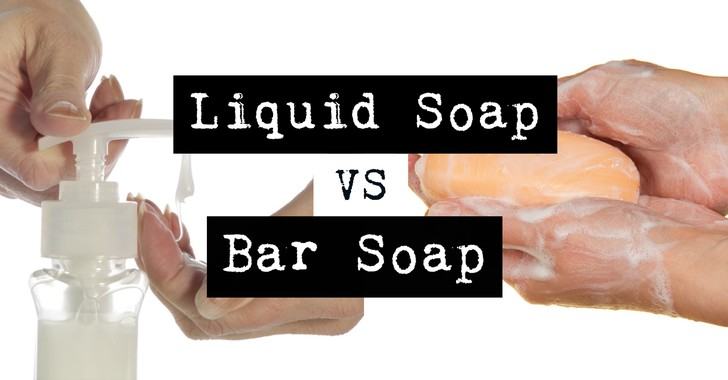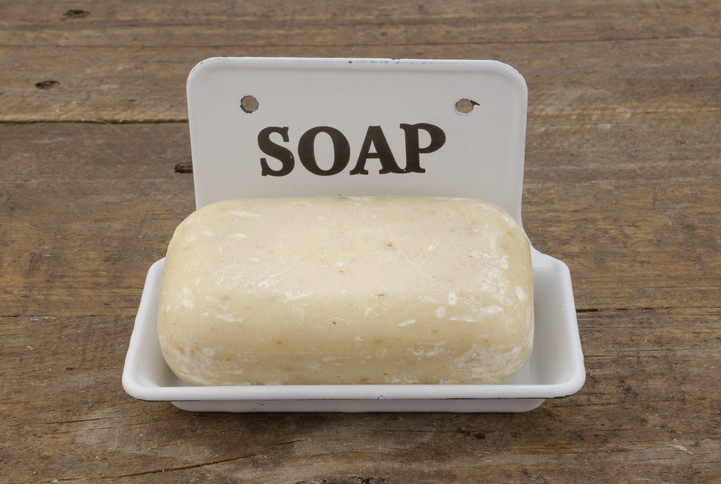
Many of us are hypersensitive to cleanliness. We’ve been trained to wash our hands numerous times a day and to avoid contact with germs at all costs.
As a means to this end, soap is an important facet of our daily lives.
For many years, the market consisted of only bar soap and everyone seemed completely satisfied.
Then liquid soap arrived on the scene and the debate opened.
Which is better to use – bar soap or liquid soap? For most of us the answer comes down to the things we personally consider most important.
Let’s examine the pros and cons of each.
Bacteria.
We all know that bacteria are a major cause of disease and the primary reason we wash our hands as frequently as we do – to prevent the spread of germs.
Liquid soap has been promoted as being anti-bacterial almost from the beginning of its introduction into the marketplace. Given that people have been using bar soap for generations, even centuries, it seems unlikely that bar soap lacks in this area.
A 1988 study conducted by the Dial Corporation looked at whether or not bacteria from a used bar of soap transferred to the skin.
Commercial deodorant bars of soap were softened and pre-washed, then inoculated with E. coli and Pseudomonas aeruginosa to create contaminated soap. The test bars actually contained 70 times the contaminants that would typically be found in used soap bars. Sixteen volunteers then washed their hands with the contaminated soaps and none showed detectable levels of either of the bacteria.
The researchers concluded that used bar soap did not lead to the transfer of bacteria from the bar to the skin and that they were safe and recommended for use when washing hands to prevent the spread of disease.
Dealing with the mess.

Though liquid soap has been around since 1865 and possibly even earlier, it didn’t become mass-produced until 1980. Prior to that bar soap was the primary way to wash hands.
A frequent complaint about bar soap was the slippery nature of the wetted soap and the lathery residue it left on counters and in soap dishes designed to contain it.
Minnetonka, the makers of Softsoap, cornered the liquid soap market with a strategy that focused on buying up all the plastic dispensers. The dispensers were wildly popular as they were easy to use and all but eliminated the sudsy residue bar soaps left behind.
Dispensers also weren’t slippery to handle. They were disposable and easy to replace. People didn’t have to spend time each week or day cleaning up the soap scum left from repeated uses of a bar of soap.
Soap pH level.
Liquid soap proponents often cite the drying effect bar soap can have on the skin. When this occurs, it is generally because the bar soap in use has a higher pH level.
This can be very drying, particularly to sensitive skin. The upside is that there is more than one type of bar soap available, many with lower pH factors and other ingredients that help prevent the stereotypical ‘drying” complaint associated with bar soap.
As a matter of fact, most bar soaps do contain glycerin which is very therapeutic for dry skin and other sensitivities like eczema.
Fragrance-free options.
Some people have allergies to fragrances while others simply do not like them added to their soaps.
Liquid soaps that are fragrance-free can be difficult to find. Bar soaps offer numerous options for those who prefer to use fragrance-free.
Recognizing waste.
When you wash your hands with bar soap, you rub the bar between your hands until you create the desired amount of lather. The ease and convenience of the pump on the liquid soap dispenser makes this harder to control.
Typically, they dispense a predetermined amount and there is almost no way to adjust this. Often it is more than is needed to create a sufficient lather. This translates into a waste of the liquid soap as compared to using bar soap.
On the other hand, as bar soap gets smaller with use, it sometimes breaks into small pieces that are too difficult to use and must be thrown away.
Speaking of lather.
A lush lather feels good on the skin and whether you are washing your hands or your entire body, the feel of the lather may encourage you to wash longer.
If you are washing longer, you may do a better job of getting clean. Liquid soaps are better at producing this type of rich lather with minimal effort.
Money down the drain.
One experience most bar soap users have dealt with is dropping a slippery bit of soap down the drain. As the bar is used, it gets smaller and smaller. This can make it a bit tricky to use.
Holding on to the small slippery pieces sometimes means they slide out of your hands and wash down the drain before you can catch them. This means that while bar soap may be less expensive, some of it is being wasted if it escapes down the drain.
Built-in moisturizers.
Some bar soaps do contain moisturizers but many people use bar soaps for their deodorizing abilities. Some of these deodorant soaps can be harsh on sensitive skin.
Women’s skin tends to be more delicate than men’s and reacts more harshly to deodorant soaps. More liquid soaps contain moisturizing ingredients and can be kinder to sensitive skin.
Exfoliation.
We ask a lot of our soap products today. Exfoliation is the process of removing dead skin from the face and body. With soap, this is accomplished by adding mild abrasives to the product.
Bar soaps provide a more intense scrub and stimulate circulation in the skin. Liquid soaps with exfoliating properties must be used in conjunction with a loofah or sponge to achieve the same effects.
Over the long term, the liquid soap varieties with glycolic or salicylic acid seem to do a better job of brightening the skin. Liquid washes also tend to leave the skin feeling less gritty after the wash is completed.
Basic ingredients.
Bar soap is most commonly made from saponified animal fat and plant oils. Saponification is the name of the process by which animal or vegetable fats are blended with a strong alkali to make soap.
Conversely, liquid soaps are petroleum based and require emulsifying agents and stabilizers in order maintain their consistency. These agents have been tested and approved by the appropriate governing agencies but few if any studies exist showing the long-term effects of repeated use of these chemicals.
Diethanolamine (DEA) is often added to liquid soap to bolster its creamy texture and foaming properties. A study done on baby mice showed that DEA inhibited their ability to absorb a key ingredient necessary for brain development. In high concentrations, mice also developed toxicity affecting mild blood, liver, kidney and testicular systems.
Ecological considerations.
A 2000 study done at the University of Missouri Outreach and Extension determined that 40% of female shoppers buying skin care products considered themselves “ecologists” or having concern for environmental factors.
That percentage has probably risen since the time of the study. A 2009 study done at the Institute of Environmental Engineering concluded that liquid soaps leave a 25% larger carbon footprint than do bar soaps.
Why is that?
It takes more chemical feedstocks and processing to manufacturing liquid soap, 7 times more and that means 7 times more energy use and carbon emissions. Liquid soaps are also packaged in plastic containers which are harder on the ecosystem to break down and dispose of that are the paper cardboard wrappings of most bar soaps.
Cost per use.
Simple math will reveal the better buy when comparing bar soap to liquid soap. Standard bar soap without any fancy additives goes for approximately 1.2 cents per gram while your basic liquid soap sells for about 1.5 cents per gram.
Bar soap is a better bargain but not by a huge margin until you look at how much it costs per hand wash.
We tend to use more liquid soap than we really need so when it’s all said and done, the bar soap costs about 0.4 cents per hand wash and the liquid soap costs 3.5 cents per wash. That can add up to a tidy sum in no time.
So, what can we conclude about whether bar soap or liquid soap is better?
It depends on the factors that are most important to you. If ecology and going green are important then bar soap wins hands down. If the decision is financial, bar soap wins again by a significant measure.
If moisturizing effects and rich lather are on the top of your priority list, then liquid soaps are the way to go.
From a purely health-conscious standpoint, bar soaps contain fewer chemicals and do just as good a job in preventing the spread of germs as their liquid counterparts.
Whatever the parameters are that you use to make your soap buying decisions, one thing is clear. Old fashioned bar soap is far from being all washed up.
